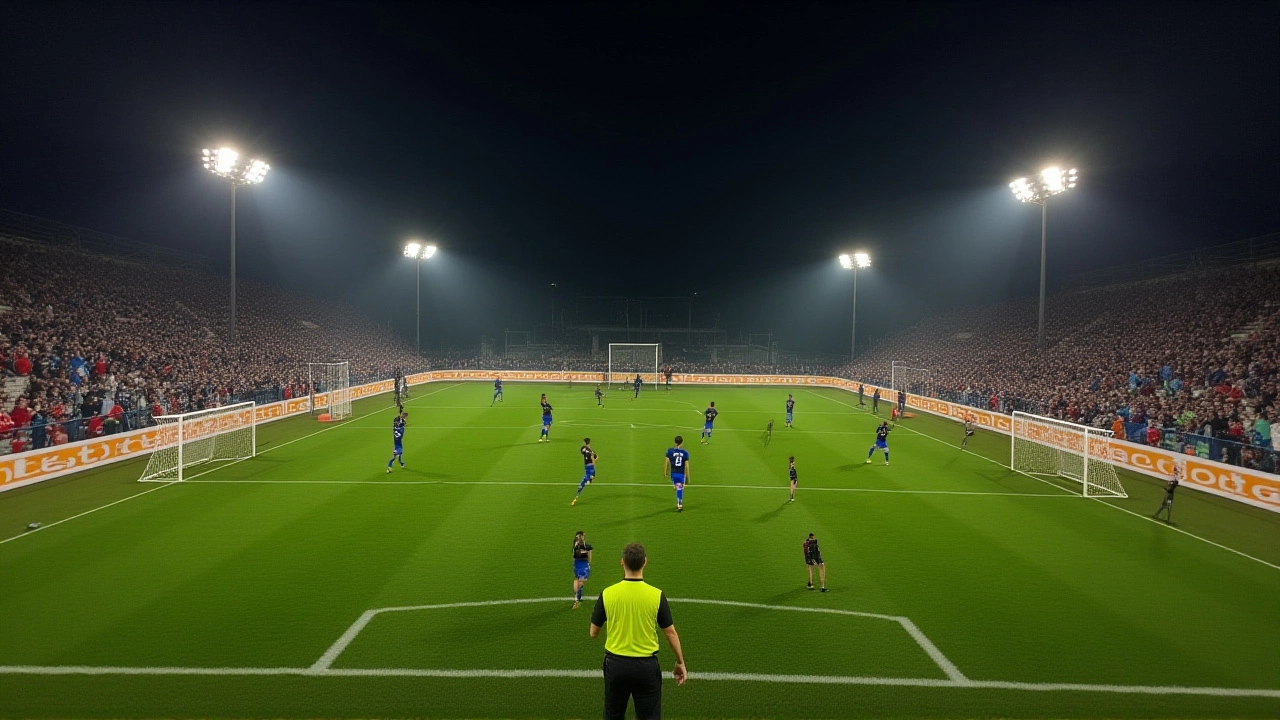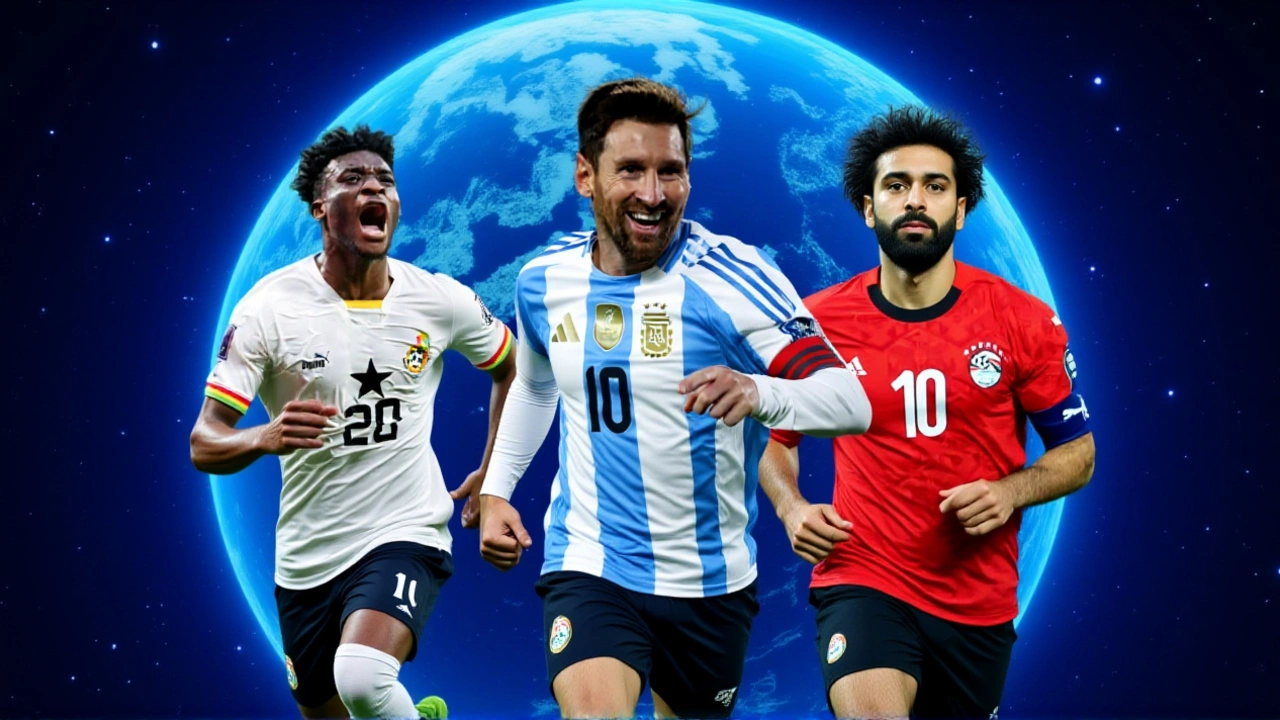When FIFA confirmed the final lineup for the 2026 FIFA World Cup, the three North American hosts – Canada, Mexico and the United States – were automatically in the mix, while Japan became the first nation to clinch a spot on March 20, 2024. The news matters because the tournament will feature 48 teams for the first time, a dramatic jump from the 32‑team format used since 1998.
How Qualification Works Across Confederations
The road to North America is a patchwork of formats. Six confederations – AFC, CAF, CONCACAF, CONMEBOL, OFC and UEFA – each run their own series of home‑and‑away round‑robins, but the number of spots and the calendar differ.
In Asia, the Asian Football Confederation (AFC) kicked off on October 12, 2023. The first goal in the whole qualification saga was netted by Lwin Moe Aung of Myanmar, who struck in a 5‑1 win over Macau.
South America’s CONMEBOL kept it simple: a single round‑robin league where every team plays the others home and away. By March 2024, Argentina had secured its ticket.
Europe’s UEFA runs the biggest show, with 54 nations divided into 12 groups of four or five. The group winners qualify directly; the runners‑up head into a two‑legged play‑off. As of the October 12, 2025 update, Croatia tops Group L with 16 points from six matches, while the Czech Republic sits in second place with 13.
Meanwhile, Oceania’s OFC still offers a single inter‑confederation play‑off berth, meaning New Zealand must survive a high‑stakes showdown to keep its hopes alive.
Early Qualifiers and Historic Debuts
Japan’s March 20, 2024 victory over Singapore (a 5‑0 thrashing) vaulted the East Asian giants into the “qualified” column, making them the first nation to lock in a place. Not far behind came New Zealand, Iran and Argentina, all confirmed by ESPN on March 24, 2024.
In a twist that will likely spark celebrations across West Africa, Cape Verde earned its maiden World Cup slot after a decisive 2‑1 win over Ghana on September 9, 2025. The same day, Jordan and Uzbekistan clinched historic debuts, sealing the tournament’s most diverse lineup ever.
South Korea, Australia and a rekindled Jordan have also secured their spots, underscoring the growing reach of the sport beyond its traditional powerhouses.
European Play‑off Landscape
UEFA’s “T”, “X” and “Y” markers have become shorthand for fans tracking their teams. Croatia, marked “T”, is assured of at least a play‑off berth and could still qualify directly if it maintains its form. The Czech Republic, flagged “X”, will need a strong Nations League ranking to keep its options open. On the opposite end, Albania and Serbia sit in “Y” territory – they cannot qualify directly but can still fight for a play‑off slot.
The playoffs, slated for March 2026, will pit the 12 runners‑up against each other in two‑leg ties. Winners join the 12 group champions, completing Europe’s 16‑team quota.

Host Nations’ Automatic Berths and Preparation
Per the 2018 FIFA statutes, the three co‑hosts – Canada, Mexico and the United States – receive automatic qualification. It’s a rare scenario: the last time three countries shared hosting duties was 2002 (Japan‑South Korea). Each nation is already investing heavily in stadium upgrades.
Canada’s new BMO Field expansion in Toronto, Mexico’s renovated Estadio Azteca, and the United States’ $2.3 billion “North American Soccer Infrastructure” package illustrate the scale. Ottawa, for example, is set to host the opening match, while New York City will see the final.
These preparations have sparked debates about competitive balance. Critics argue that automatic berths could dilute the quality, but supporters point to the commercial boost and the chance to grow the game in markets that have traditionally lagged.
What’s Next: Play‑offs, Final Draw and Tournament Kick‑off
The final inter‑confederation play‑offs will be staged in March 2026, featuring the two remaining spots. Teams from AFC, CAF, CONCACAF, CONMEBOL, OFC and UEFA will converge in a single‑venue knockout to decide who fills the last slots.
After the play‑offs, FIFA will hold the final draw in July 2026, assigning the 48 qualified teams to twelve groups of four. The tournament itself kicks off on June 11, 2026, with the first match – a showdown between the United States and Mexico – scheduled for the MetLife Stadium in New Jersey (a neutral venue for logistical reasons).
From a broader perspective, the expansion reshapes the World Cup’s economics. More matches mean more broadcasting rights, ticket sales and sponsorship revenue. Yet the increase also places a heavier strain on player fatigue, especially for clubs that must release talent for longer periods.
One thing’s certain: the 2026 edition will be the most globally representative ever, a true celebration of football’s universal appeal.

Key Facts
- Hosts: Canada, Mexico, United States (automatic qualification)
- First qualifier: Japan (March 20, 2024)
- Historic debutants: Cape Verde, Jordan, Uzbekistan
- Total teams: 48 (up from 32)
- Final play‑offs: March 2026, inter‑confederation format
Frequently Asked Questions
How does the expanded 48‑team format affect smaller nations?
The larger field adds three extra slots per confederation, giving nations like Cape Verde, Jordan and Uzbekistan realistic pathways to the finals. It also means more exposure, sponsor interest and revenue for those federations, potentially accelerating development programs.
Why do the host nations receive automatic berths?
FIFA’s statutes, revised in 2018, grant automatic qualification to defending champions and hosts to ensure local fan engagement and to justify the massive infrastructure investments the host countries undertake.
What are the chances that a European ‘Y’ team reaches the World Cup?
A ‘Y’ marker means a team cannot qualify directly via its group, but it can still claim a play‑off spot. Historically, about 30 % of ‘Y’ teams have survived the play‑offs, so while the odds are slim, they’re not negligible.
When and where will the inter‑confederation play‑offs take place?
FIFA announced that the two decisive play‑off matches will be held in March 2026 at a neutral venue in Doha, Qatar, using a single‑match knockout format to decide the final two qualifiers.
What impact will the 2026 World Cup have on the club calendar?
Clubs will face longer international windows, especially in June‑July when the tournament runs. Many leagues have already adjusted their schedules, and UEFA is negotiating a compressed Champions League format to mitigate player fatigue.
